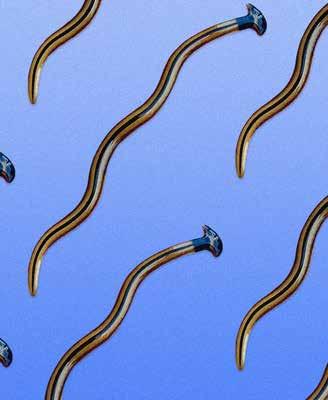
1 minute read
Invasive Hammerhead Worm Widespread in Texas

The hammerhead worm can reach about a foot in length, though six inches is more typical. Texas is actually home to two hammerhead species: Bipalium kewense, which is more commonly seen, and Bipalium vagum. Both often have a dark stripe down the middle. The latter is smaller, topping out at about two inches, and only began popping up in Texas within the past few years. The larger species is a threat because it eats earthworms, which play a vital role in keeping soil healthy and rich. “If earthworms were eliminated, then our plants aren’t getting the nutrients they need,” Ashley Morgan-Olvera, research and education director with the Texas Invasive Species Institute, says. “This could impact how our yards, our gardens, and our crop fields grow.” Native to Southeast Asia, hammerhead worms were first found in the U.S. in the early 1900s
Advertisement
The worm is easily identified by its spade-shaped head. “It doesn’t look like anything else we’ve seen,” says Morgan-Olvera. “We knew it to be in East Texas, but it’s also in North, Central and South Texas—so pretty much everywhere but our dry, arid areas.” Hammerheads are the only terrestrial invertebrates known to secrete a neurotoxin called tetrodotoxin—the same poison in pufferfish. Touching one might briefly cause tingling or numbness. It won’t kill pets, but it will leave them feeling sick for about a day. To kill them, put it in a Ziploc bag while protecting hands with a napkin or gloves and add vinegar or salt. Then seal the bag and throw it away. Just cutting it with a shovel will make two new worms.
To report a hammerhead, take a photo and send it, along with location coordinates, to Invasives@shsu.edu.









